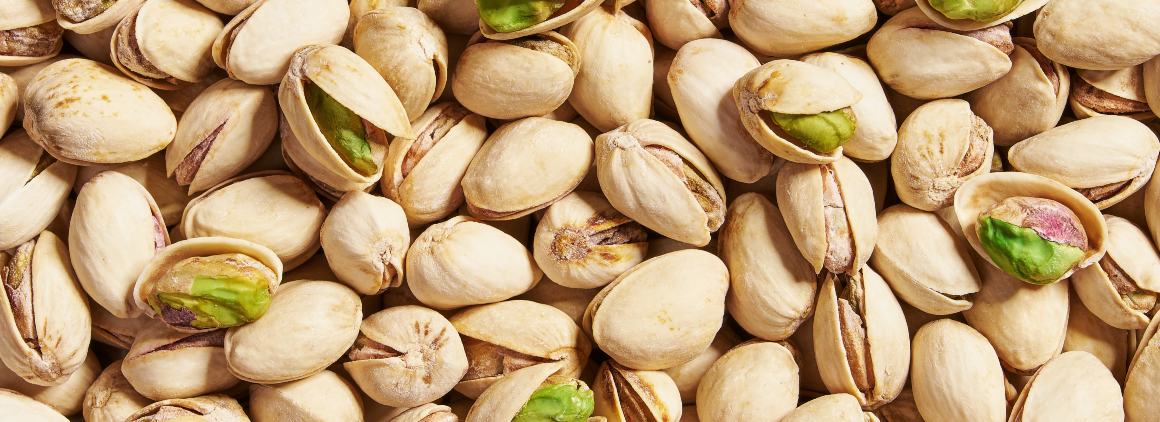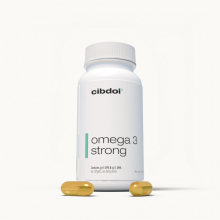Are Pistachios a Good Source of Omega-3 Fatty Acids?
Published:
Omega-3 fatty acids provide many health benefits. Getting adequate omega-3s from your diet is important. The main omega-3s are ALA, EPA and DHA. Pistachios are a popular nutritious nut. But do pistachios contain any significant amount of omega-3 fats?
Contents:
- Overview of Omega-3 Fatty Acids
- Omega-3 Fatty Acids in Pistachios
- Comparison of Omega-3s in Pistachios vs. Other Foods
- Potential Benefits of Omega-3 ALA in Pistachios
- Omega-6 to Omega-3 Ratio in Pistachios
- Ways to Increase Omega-3 ALA in Pistachios
- Most Important Dietary Sources of Omega-3s
- Pistachios and Omega-3s
- Do pistachios have omega-3? Conclusion
Let's analyze the omega-3 profile of pistachios and compare to other high omega-3 foods.

Overview of Omega-3 Fatty Acids
Omega-3 fatty acids are a type of polyunsaturated fat that is crucial for health. There are three main dietary omega-3s:
ALA
- Short for alpha-linolenic acid.
- Found primarily in plant foods.
- Offers cardiovascular benefits.
EPA
- Eicosapentaenoic acid.
- Mainly from seafood.
- Supports heart and brain health.
DHA
- Docosahexaenoic acid.
- Primarily from fatty fish.
- Vital for eye and brain function.
ALA comes from plant sources while EPA and DHA come from marine sources like fish. Getting adequate amounts of all three types of omega-3s is key for overall health. But do pistachios provide any significant omega-3 content?
Omega-3 Fatty Acids in Pistachios
Here is the typical omega-3 profile of pistachios:
- Total fat: Around 45% fat, mostly mono- and polyunsaturated fat (1).
- ALA content: Less than 100 mg in 1 ounce serving (2).
- EPA/DHA content: None.
While pistachios do contain small traces of the plant-based omega-3 ALA, the amounts are quite minimal.
Pistachios provide no marine-sourced EPA or DHA omega-3 fats.
This omega-3 content is very low compared to general recommendations for daily omega-3 intake:
- ALA: 1.1-1.6 grams (3).
- EPA/DHA: 250-500 mg combined (4).
So pistachios cannot be considered a significant source of any of the main omega-3 fatty acids.
Now let’s compare the omega-3 amounts in pistachios to other high omega-3 foods.
Comparison of Omega-3s in Pistachios vs. Other Foods
The omega-3 content of pistachios is negligible compared to both marine sources of EPA/DHA and plant sources of ALA:
Pistachios vs. Seafood
- Pistachios: Less than 100mg omega-3 ALA per ounce
- Salmon: Over 2,000mg EPA/DHA per 6oz serving
- Tuna: Approximately 500-1,000mg EPA/DHA per 6oz serving
Pistachios vs. Plant Sources
- Pistachios: Less than 100mg omega-3 ALA per ounce
- Walnuts: 2,500mg omega-3 ALA per ounce
- Flaxseeds: Over 6,000mg omega-3 ALA per ounce
- Chia seeds: Around 5,000mg omega-3 ALA per ounce
Clearly foods like fatty fish, walnuts, flaxseeds and chia seeds provide far more abundant omega-3 fats than pistachios.
Potential Benefits of Omega-3 ALA in Pistachios
While the omega-3 quantity is low, the bit of ALA in pistachios may still offer benefits including:
- Supporting heart health. ALA has favorable effects on inflammation, blood pressure, cholesterol and other cardiovascular risk factors (5).
- Reducing inflammation. ALA exhibits anti-inflammatory activities that can alleviate inflammatory conditions (6).
- Aiding brain function. ALA plays a role in optimal brain development and cognition (7).
- Improving mental health. Increased ALA intake may benefit depression, anxiety and stress (8).
However, the amounts in pistachios are well below therapeutic doses to treat major health conditions. Still, the omega-3 ALA may contribute to the overall nutritional benefits of pistachios.
Omega-6 to Omega-3 Ratio in Pistachios
In addition to the small traces of omega-3 ALA, pistachios contain abundant amounts of the omega-6 fat linoleic acid:
- Omega-3 ALA: Less than 100mg per ounce
- Omega-6 LA: Approximately 6,800mg per ounce (9)
This results in a high omega-6 to omega-3 ratio around 68:1, which is far above the ideal balance for preventing inflammation.
However, eating pistachios in moderation along with other omega-3-rich foods may help mitigate potential negative effects of this high ratio.
Ways to Increase Omega-3 ALA in Pistachios
There are a couple ways you may be able to slightly raise the negligible omega-3 content of pistachios:
- Choose in-shell pistachios, which may help preserve nutrients vs. shelled nuts.
- Pair pistachios with other foods that provide more omega-3 ALA, such as fruits, vegetables, seeds and beans.
- If having pistachios as a snack, also eat an omega-3-rich food like salmon or walnuts.
- Use chopped pistachios in dishes along with ingredients higher in omega-3s.
However, eating pistachios along with other high omega-3 foods is the best overall strategy.
Most Important Dietary Sources of Omega-3s
Since pistachios offer minimal omega-3 ALA and no EPA/DHA, they should not be depended on to meet daily omega-3 needs.
These foods provide the most abundant dietary omega-3s:
EPA/DHA Sources:
- Fatty fish: Salmon, sardines, mackerel, herring, trout
- Other seafood: Oysters, mussels, shrimp
- Fish oil and algae supplements
- Grass-fed meats and dairy
ALA Sources:
- Oils: Flaxseed, soybean, canola
- Nuts: Walnuts, pecans, hazelnuts
- Seeds: Flaxseeds, chia seeds, hemp seeds
- Leafy green vegetables
- Certain beans and lentils
Aim for at least 8 ounces of fatty fish weekly, along with daily plant sources like flaxseeds, walnuts or omega-3 oils to meet omega-3 needs.
Pistachios and Omega-3s
In summary:
- Pistachios provide only tiny traces of the plant omega-3 ALA at less than 100mg per serving.
- They contain no marine-sourced EPA or DHA omega-3 fats.
- The omega-3 content of pistachios is very low compared to fatty fish, walnuts, flaxseeds and other high omega-3 foods.
- The bit of ALA may still provide some heart health and anti-inflammatory benefits.
- Focus on other dietary sources to meet daily omega-3 fatty acid intake recommendations.
Do pistachios have omega-3? Conclusion
Pistachios are very low sources of omega-3 fatty acids, providing negligible amounts of ALA and no EPA or DHA. To meet your omega-3 needs, be sure to include regular servings of fatty fish, flaxseeds, walnuts, chia seeds and oils in your diet.
Enjoy pistachios for their great taste and nutritional benefits like protein, healthy fats, vitamins and minerals, but not as significant sources of anti-inflammatory omega-3 fats. Get these essential omega-3s from the richest food sources for optimal health.










